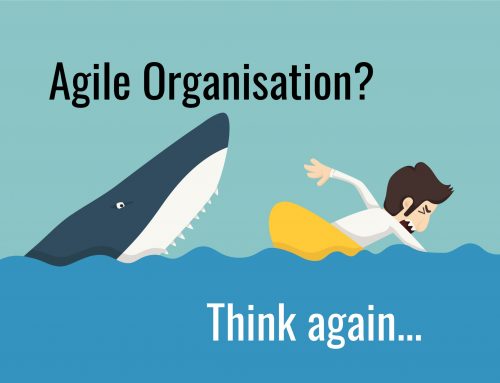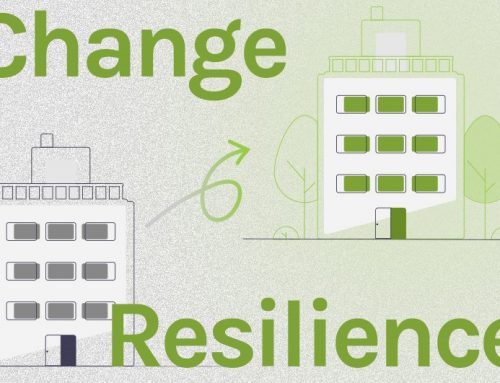2021/11/29
In part one I attempted to clarify two concepts “Agile Methods & Tools” and “Agile Organisation” and show that deploying a lot of the first does not necessarily result in the second. This week I´d like to identify some of the factors that really can make an organisation agile – able to make a timely response to changes in its (VUCA) environment – and show that Agile Methods and Tools are not necessary to do this.
The Fire Service – 200 Years of Agile Organizational Development
In Germany in 2019, in Bavaria alone, the fire service was called out 245,000 times, about once every 2.2 minutes on average. Over an area of around 70,550 km², there is no way of knowing where the next emergency is likely to happen or what kind of emergency it could be. The variety of emergencies ranges from domestic and industrial fires, to road or rail accidents to storms and floods. Only weather forecasts can help, to some extent, to give advance warning of storms that may bring down trees or cause flooding in certain areas. This degree of uncertainty and unpredictability is the emergency services´ form of “VUCA environment” but the need to react quickly can often be a matter of life and death. How then does the Fire Service manage to be so Agile, reacting within minutes anywhere in Bavaria to any kind of emergency, 24 hours a day, seven days a week? And what can we learn about how the fire service is organized that could be helpful for businesses?
Highly decentralized and flexible
There are currently more than 7800 fire stations in Bavaria, the majority of these (more than 7500) are voluntary fire services. The local municipalities organize and fund their fire services with support from Bavarian “Landkreise” for special equipment that can be shared across several municipalities. The municipalities are also required to install special inspectors whose job it is to make sure that all the rules, regulations and standards are being met, and of course, there is a centralized emergency call centre which activates the municipalities´ fire services according to the emergency situations that arise. Apart from this, there is almost no centralized organization. What there is a very detailed and clearly defined set of rules and regulations about how the fire services are to be set-up, developed and run. If required, fire services act together on one emergency as a single structure but this structure dissolves again as soon as the emergency is over.
Decision Making Speed
Where delays might be a matter of life and death, decision making must be trained. All emergency services have clear protocols for high-speed emergency analysis and decision making and contingency plans which can be deployed at a moment´s notice. Most businesses have emergency plans for the health and safety of workers but not for other kinds of risks.
Autonomy and self-organization
Obviously, each fire service needs to be able to deal independently and autonomously with most emergencies it likely to face. Each station has fire-fighters, leaders, fire engines, safety equipment, radio equipment, etc. and is trained to a level where it can deal with the normal variety of emergencies that occur. In modern business speak we call these “dedicated, autonomous, cross-functional, teams”. The structure and roles and responsibilities within the individual fire services is standardized, as are many working procedures, a fact which contributes to another aspect of agility in the fire-service, the interchangeability of manpower and the ability to collaborate with other services when needed.
Plug and play collaboration
In larger emergencies where several fire services need to work together, each of the teams is organized according to the same basic structures and trained on the same procedures so that working together is easy. Standard procedures have been developed over years by fire services, laying out the lessons learned and do´s and don’ts of tackling different kinds of emergencies (for example how to deal with specific chemicals). These procedures, called “Standard Einsatz Regeln” in German are the result of institutionalised reflective learning (retrospectives?). The power of having standardized definitions and terminology for effective collaboration is also not to be underestimated and this is one point where most business organizations have much room for improvement.
Structural Redundancy / Reserves
This brings us to one of the most important enablers of organizational agility which is perfectly understood in the fire service but results mostly in dropping jaws in the offices of senior business managers. If we take the 245,000 deployments per year and divide that by 7800 fire stations we come to an average of about 32 deployments per station per year. Let´s assume that each deployment takes 1 day, that means that on 333 days a year the resources of the fire service are not in active use. That is 91% of the time! But – and this is the big lesson for business managers – it is exactly this “structural redundancy” that results in the agility that the fire service needs to have. In other words, agility costs!
Recently I discussed another interesting example of the cost of agility with a 1st tier supplier to the auto-industry. They discovered that if they wanted to be able to deliver certain parts to any of their customers plants within a certain time they had to increase stocks. Lean doesn´t make sense here, what is needed is some “structural redundancy” in the form of stocks ready to go, on demand, to the customer.
It is not surprising then in our businesses, which are tuned to 110% efficiency and where pretty much everybody is overloaded, that we struggle to find agility. Managers need to realize that agility comes at a price in terms of people and other resources.
Staffing and motivation
It is interesting that about 314,000 of the 325,000 members of the fire service in Bavaria are volunteers. How valuable would it be to a business to have such an army of volunteers, and what a huge difference it would make to agility if you could call on them 24×7 to take up an emergency project!
So what motivates someone to do this in their spare time? These people have normal jobs and do this on-top! One factor that I believe is very important is the sense of purpose. It is easy to feel you are doing something useful if you are helping to save lives and property from fires! For most people, the profit motive of many businesses comes a very poor second in comparison. Another motive that I believe is very important for motivation is the social status that comes with belonging to a team with an important mission. In Bavaria, the local “Freiwillige Feuerwehr” have an important place in the social life of the communities and are often present at public gatherings and traditional festivals.
Many leaders could get better at helping employees to feel the greater purpose or benefit of their products and services and thereby engaging more “motivation by purpose”.
Reserves in Companies
Adding agility with voluntary reserves is a concept often used in the military as well. In the UK reserves make up about 30% of the armed forces. So where could we go in businesses to find such a group of trained reserves who could be brought in a short notice to staff important projects and boost agility? I believe that there are many very experienced and highly trained people in their 60s who are retired from the payroll but would be very interested in working on a part-time and freelance basis on specific company projects. Many people suffer from the loss of sense of purpose and social interactions that goes along with retirement. Let´s develop ways of keeping a community of retired experts whose expertise can be drawn on when needed.
In fact, managers do normally have another source of reserves available to them with the people they already have! Most people are willing to go the extra mile and put in some extra hours to help the company. This “employee goodwill” is hugely valuable and mostly underestimated and under-appreciated. I have seen many examples, especially in complex change situations, where this goodwill has been squandered carelessly by poor project planning, lack of high-level direction or as a result of political games. Managers and leaders should consider what would happen if all the employees only worked according to their contracts and withdrew their goodwill – I believe in many companies this would be disastrous! A little appreciation of the extra efforts people put in is mostly all that is needed.
In Summary
With these 6 concepts; autonomy and self-organization, decision making speed, plug and play collaboration, structural redundancy, purpose driven motivation and valued reserves, much can be done to improve our businesses viability or successful longevity. The fire-service example shows us, that while Agile Methods and Tools may be useful, they are not sufficient or even necessary for Organizational Agility.





